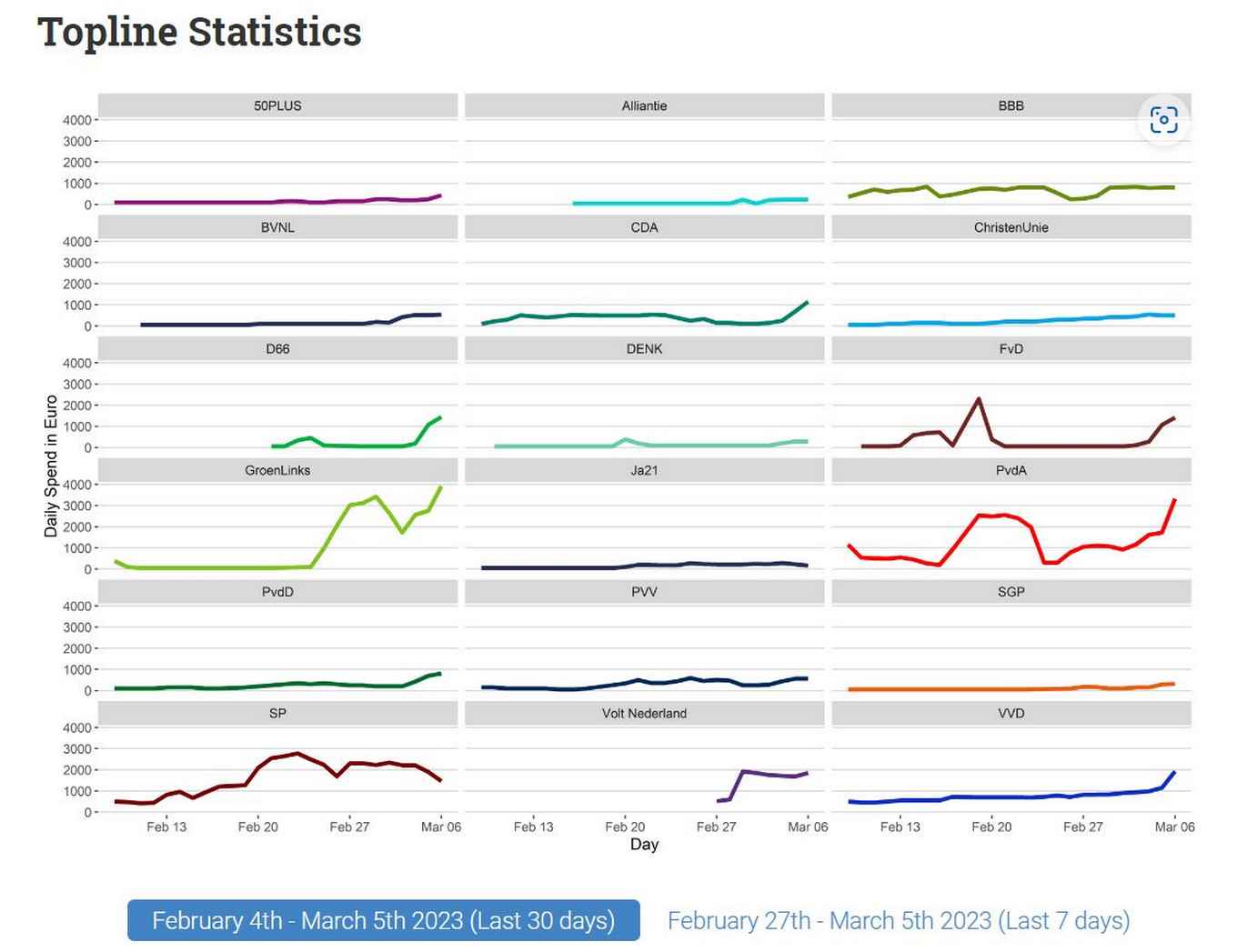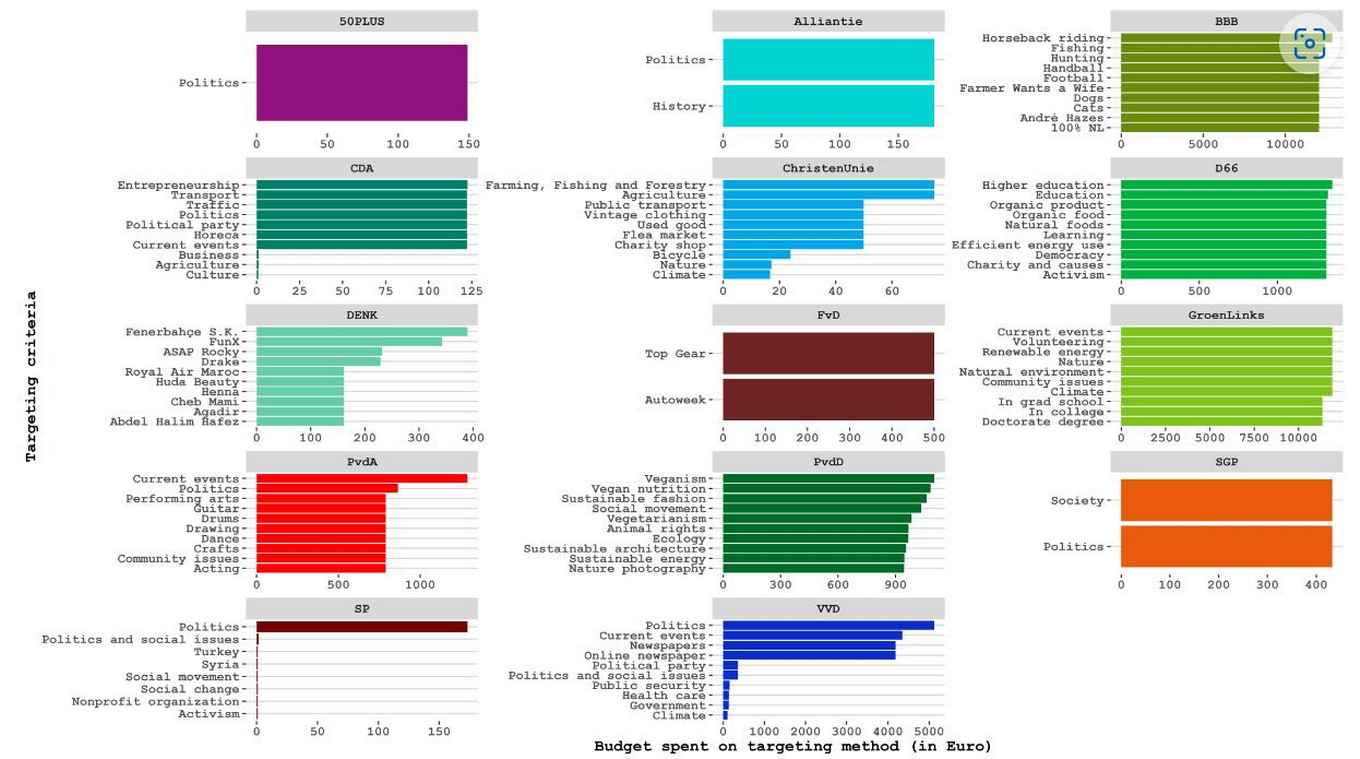Follow how much money is being spent on political campaigning
9 March 2023
In collaboration with Who Targets Me, Votta and colleagues monitor over nine hundred Dutch political advertisers during the 2023 Provinciale Statenverkiezingen (Provincial elections) to better understand how campaigns use different targeting methods made available by Meta (Facebook and Instagram). To do this, they use data from the Meta Ad Library using the new ‘Audience’ data which gives some detail on how pages target their ads. They built a dashboard that gathers all these data of single pages and aggregates it on the party level. This gives us a unique insight in microtargeting during election time.
What does the dashboard show us?
On the dashboard we can see how much money each party spends on online campaigning through Meta and how this changes over time. We can also whether money is spend by only a few accounts or if many individual pages and politicians spend the budget. Furthermore, the dashboard shows the criteria used to target certain audiences, like age group and geography. ‘For example, 50Plus spends almost a 100% of its budget on targeting older age groups.’
Here is where the microtargeting really takes place.Fabio Votta
The board furthermore shows the top targeted audiences for each party. Most of these audiences are so called ‘interest audiences,’ meaning people that are targeted by parties based on their interests in certain topics (see figure below). ‘This category I find most interesting,’ states Votta, ‘because this is where the microtargeting really takes place. It is called “interest”, but it can be used as proxies for characteristics that you would technically not be allowed to target on Meta, like which religious affiliation a person has.’
What stands out?
What stands out now will probably change next week, but at the time of this writing the Socialist Party (SP) was the biggest spender while the Liberal Party (VVD) only took off very recently. ‘Most parties are really starting to spend money now, a week before the elections. That is the time when people pay attention, and it makes more sense.’
What also stands out is that overall parties do not really use age and gender to target audiences, and there is almost no political party targeting people below college degree. ‘Maybe they target latter through different means or do not have them on the radar. From different research we know that political ads deliver less to lower educated people. So, it could also be an economic incentive.’
What are the effects of online campaigning and microtargeting?
For political parties it is hard to measure how effective these online campaigns really are and if they succeeded in persuading someone to vote. From research we know that this form of political campaigning is not as persuasive as we might think. ‘It is limited and context dependent’, explains Votta. ‘It is not highly likely that it will make you switch from one party to the other. But you might think better of a party you were already positive about and it can increase the rate of favorability when you are targeted on a certain theme you strongly support.’ What the parties do achieve is reaching a lot of people with a relatively modest budget, compared to other campaigning elements like rallies.
Why gathering these data?
Votta gathers these data as part of his PhD research on political micro targeting. ‘Shedding light on campaign strategies and creating transparency around what parties are up to, is part of what I am interested in.’ Also, it is only recently that these data have become available for research. And Meta is one of the major platforms political parties use to micro target diverse audiences. With the public Meta Ad Library, we can now see what individual parties do.’
When are the final calculations?
In the dashboard data is updated daily but with a days lag. Shortly after the elections of 15 March the dashboard will show the final budgets that were spent by the political parties. So, keep an eye on the dashboard because what you see today might have changed tomorrow!

